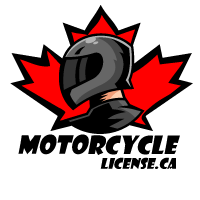Canada, like many countries around the world, has implemented motorcycle helmet laws to help protect riders from serious injuries or fatalities in the event of an accident. These laws vary by province, but they all have the same goal: to encourage motorcyclists to wear a helmet that meets certain safety standards. In this article, we will explore the different types of helmet classifications in Canada: DOT, Snell, and ECE.
3 Types of Helmet Classifications in Canada:
-
DOT-Certified Helmet Classification
-
Snell Helmet Classification
-
ECE Helmet Classification
DOT – Certified (Department of Transportation)
DOT (Department of Transportation) helmets are the most common type of motorcycle helmet in North America. This certification is issued by the US Department of Transportation and is accepted in Canada as well. A DOT-certified helmet is designed to meet specific safety standards and must be able to withstand a series of impact tests. These tests are designed to simulate the type of impact a rider might experience in a crash. DOT helmets must also have a certain level of peripheral vision and meet specific requirements for chin strap strength and retention.
Snell Classification?
Snell helmets are certified by the Snell Memorial Foundation, a non-profit organization that has been testing and certifying helmets since 1957. The Snell certification is more stringent than the DOT certification and is often preferred by serious riders or racers. Snell helmets are tested for impact resistance, penetration resistance, and the ability to stay on the rider’s head in the event of an accident. Snell also requires helmets to undergo a batch testing process, which means that a sample of helmets from each production run is tested to ensure consistency and quality.
What is ECE?
ECE (Economic Commission for Europe) helmets are certified to a set of standards established by the United Nations. These standards are more widely accepted outside of North America, but some Canadian provinces recognize ECE certification as well. ECE helmets must meet specific impact resistance requirements and also undergo tests for retention, penetration, and peripheral vision.
It’s important to note that helmet laws vary by province in Canada. In some provinces, such as British Columbia and Manitoba, it is mandatory for riders to wear a helmet that meets specific safety standards, such as DOT or ECE. In other provinces, such as Alberta and Saskatchewan, riders are only required to wear a helmet that meets the minimum safety standards set out by the province. These standards may include DOT, Snell, or ECE.
In addition to the type of certification, riders should also consider the fit and quality of their helmet. A properly fitting helmet can help reduce the risk of serious head injuries in the event of an accident. Riders should also look for helmets that are made from high-quality materials and have a proven track record of safety.
Motorcycle helmet laws in Canada are designed to protect riders from serious injuries or fatalities in the event of an accident. The three types of helmet classifications in Canada are DOT, Snell, and ECE. Riders should consider the certification, fit, and quality of their helmet when selecting one that meets their needs and provides the necessary level of protection.








